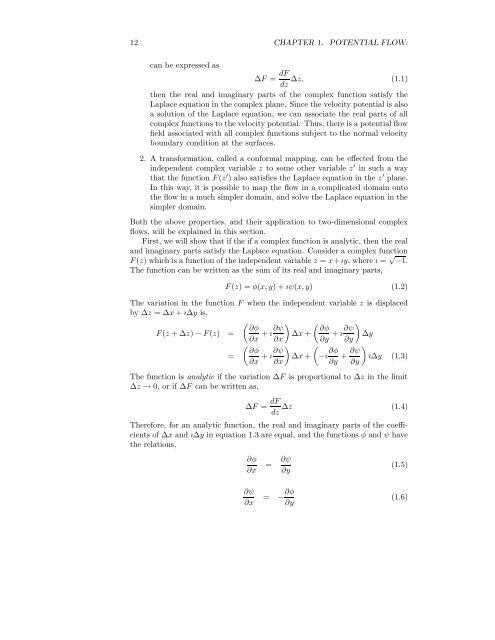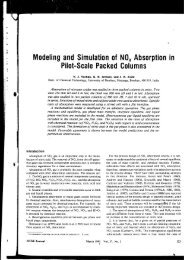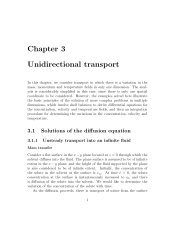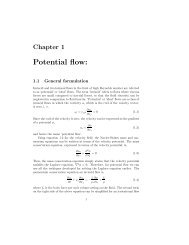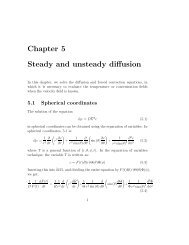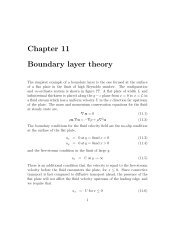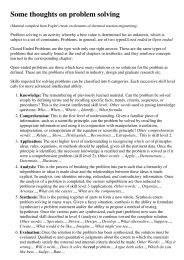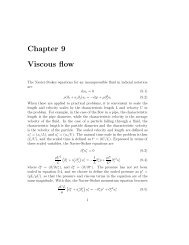Create successful ePaper yourself
Turn your PDF publications into a flip-book with our unique Google optimized e-Paper software.
12 CHAPTER 1. POTENTIAL FLOW:can be expressed as∆F = dF ∆z, (1.1)dzthen the real and imaginary parts of the complex function satisfy theLaplace equation in the complex plane. Since the velocity potential is alsoa solution of the Laplace equation, we can associate the real parts of allcomplex functions to the velocity potential. Thus, there is a potential <strong>flow</strong>field associated with all complex functions subject to the normal velocityboundary condition at the surfaces.2. A transformation, called a conformal mapping, can be effected from theindependent complex variable z to some other variable z ′ in such a waythat the function F (z ′ ) also satisfies the Laplace equation in the z ′ plane.In this way, it is possible to map the <strong>flow</strong> in a complicated domain ontothe <strong>flow</strong> in a much simpler domain, and solve the Laplace equation in thesimpler domain.Both the above properties, and their application to two-dimensional complex<strong>flow</strong>s, will be explained in this section.First, we will show that if the if a complex function is analytic, then the realand imaginary parts satisfy the Laplace equation. Consider a complex functionF (z) which is a function of the independent variable z = x+ıy, where ı = √ −1.The function can be written as the sum of its real and imaginary parts,F (z) = φ(x, y) + ıψ(x, y) (1.2)The variation in the function F when the independent variable z is displacedby ∆z = ∆x + ı∆y is,( ) ( )∂φ∂φF (z + ∆z) − F (z) =∂x + ı∂ψ ∆x +∂x ∂y + ı∂ψ ∆y∂y( ) (∂φ=∂x + ı∂ψ ∆x + −ı ∂φ∂x∂y + ∂ψ )ı∆y (1.3)∂yThe function is analytic if the variation ∆F is proportional to ∆z in the limit∆z → 0, or if ∆F can be written as,∆F = dF ∆z (1.4)dzTherefore, for an analytic function, the real and imaginary parts of the coefficientsof ∆x and ı∆y in equation 1.3 are equal, and the functions φ and ψ havethe relations,∂φ∂x= ∂ψ∂y(1.5)∂ψ∂x= − ∂φ∂y(1.6)


